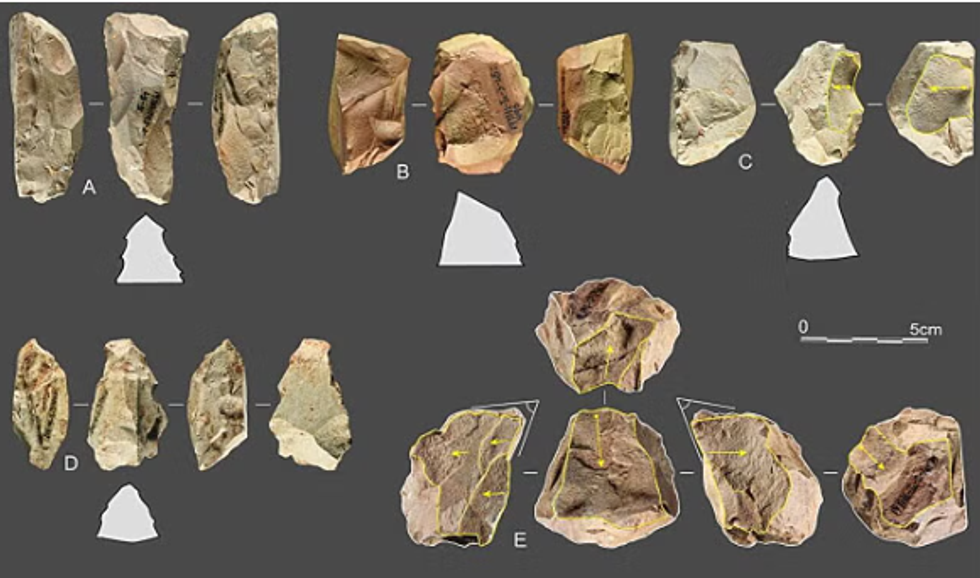Donald Trump says US ‘well equipped’ for war with China
GB News
The discovery has left archaeologists puzzled about how tools associated with Neanderthals in Europe appeared in East Asia
Don't Miss
Most Read
Trending on GB News
Archaeologists have discovered stone tools in China that could rewrite our understanding of human evolution in East Asia.
The Quina technology, previously only found in Europe and associated with Neanderthals, has been unearthed at a site in southwestern China dating back 50,000 to 60,000 years.
This finding challenges long-held assumptions about technological development in the region.
The Middle Stone Age, spanning from 300,000 to 30,000 years ago, was a pivotal period in human evolution. Scientists have traditionally viewed this era as dynamic and progressive in Europe and Africa.

The Quina technology has been unearthed at a site in southwestern China dating back 50,000 to 60,000 years
Ben Marwick et al, PNAS
In contrast, East Asia was thought to have experienced little technological development among early human populations.
This period is also associated with the emergence of Homo sapiens in Africa and the evolution of archaic humans like Neanderthals and Denisovans.
Researchers discovered a distinctive Quina stone scraper at the site, characterised by its thick, asymmetrical shape with a broad, sharp working edge. The tool shows clear evidence of use and resharpening.
Archaeologists also found byproducts of the tool's manufacture. These implements were likely used for scraping and scratching bones, antlers or wood.
MORE LIKE THIS:
- Archaeology breakthrough as discovery of 4,000-year-old settlement challenges 'long-held belief'
- Archaeology breakthrough as researchers uncover hundreds of skeletons in centuries-old grave site beneath a Debenhams
- Archaeology breakthrough as 'unprecedented' new Iron Age hoard discovered: 'It's unusual'
The discovery has left archaeologists puzzled about how tools associated with Neanderthals in Europe appeared in East Asia.
Experts are uncertain whether the technology was introduced by people migrating from the west. Alternatively, the tools may have been independently developed without direct contact between groups.
This finding suggests East Asia may have been more technologically dynamic than previously believed.
"This is a big upset to the way we think about that part of the world in that period of time," said Ben Marwick, a co-author of the study from the University of Washington.
"It really raises the question of, what else were people doing during this period that we haven't found yet?"
The discovery challenges established theories about technological stagnation in prehistoric East Asia.
Researchers are exploring ways to determine the origin of this technology in China.
"We can try to see if they were doing something similar beforehand that Quina seemed to evolve out of," Dr Marwick explained.

The discovery has left archaeologists puzzled about how tools associated with Neanderthals in Europe appeared in East Asia
PAIf evidence shows local experimentation leading to the Quina method, it would suggest independent development.
Conversely, if the tools appeared suddenly without prior experimentation, they might have been introduced by another group.
"The idea that nothing has changed for such a long time in East Asia also has a tight grip on people," Dr Marwick noted.
Finding ancient human remains could help solve this archaeological puzzle.
"If we can find the human remains associated with this period, we might find something surprising -- maybe even a new human ancestor that we don't know about yet," Dr Marwick suggested.
The discovery opens new possibilities for understanding human evolution in the region.







